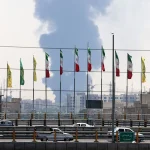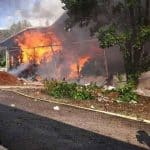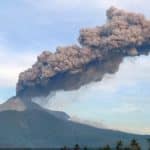Liga Asuransi – Hello all risk-takers! I trust you are well. Wishing that your endeavors in 2023 yield optimal results and anticipate even greater development and success in 2024.
In my capacity as a senior insurance broker, I feel compelled to reflect on the significant incidents that marked the conclusion of 2023, ranking among the most substantial accidents in Indonesia for that year. This unfortunate event underscores a crucial message for all stakeholders in risk management and insurance: accidents are unpredictable and can transpire at any time, in any place, and to anyone.
On the morning of December 24, 2023, just a day before the joyous Christmas festivities, a catastrophic incident unfolded at the PT Indonesia Tsingshan Stainless Steel (ITSS) Smelter furnace within the premises of PT Indonesia Morowali Industrial Park (IMIP) in Morowali Regency, Southeast Sulawesi.
Regrettably, this event claimed the lives of 18 workers and left 46 others injured, with the casualties comprising 9 Indonesian and 4 Chinese workers. According to Dedy Kurniawan, the Head of the Media Relations Division at PT IMIP, the situation at the incident site was brought under control by 16:15 WITA. The ignition of the No. 41 smelter furnace, initially closed for maintenance, occurred during the repair process when residual slag emerged, subsequently encountering combustible materials, resulting in the tragic incident.
The cause of the explosion was the collapse of the furnace wall, leading to the flow of molten iron slag and creating a deadly fire situation. PT IMIP management takes responsibility for the treatment costs and compensation for the victims’ families. The injured victims are being treated at RSUD Morowali, with some under observation at the IMIP Clinic.
The PT IMIP team is coordinating with relevant parties, including safety tenants, the National Vital Object Security Unit (PAM Obvitnas), Central Sulawesi Regional Police, Danrem Tadulako, and local government, to handle this crisis. The Ministry of Manpower ensures that the rights of workers affected by this workplace accident will be guaranteed, while PT IMIP management forms an accident response team as a swift response to this tragic event.
This incident is truly shocking, and I am concerned about the significant impact felt by the families of the victims, workers, and relevant stakeholders. As part of the insurance industry community, we are committed to providing full support, including expediting a fair and prompt claims process. We hope the bereaved families can find strength during this challenging time, and we aspire to the swift.
UNDERSTANDING NICKEL MINING IN MOROWALI
Morowali, Indonesia, is one of the regions with significant potential and development in the nickel mining industry. This potential is seen as part of the Indonesian government’s strategy to boost the national economy through the mining and industrial sectors.
Major players in the nickel mining industry in Morowali are generally large nickel mining companies. One of the prominent companies in the region is PT Indonesia Tsingshan Stainless Steel (ITSS). This company is involved in the extraction and processing of nickel in Morowali, including nickel smelting operations and related activities.
As the nickel mining industry in Morowali grows, the nickel production from the region has also seen a significant increase. The production volume can vary over time, depending on factors such as global market demand, commodity prices, and government regulations related to the mining industry.
THE PROCESS OF MAKING FERRONICKEL
The process of making ferronickel involves a series of complex stages and includes several process units. Ferronickel itself is a nickel and iron alloy with a significant nickel content. Here is a general overview of the ferronickel production process:
Nickel Mining:
- The first stage involves mining nickel from laterite or sulfide nickel deposits.
- Nickel is then extracted from the ore using methods such as pyrometallurgy or hydrometallurgy.
Processing Nickel Ore:
- The nickel ore is crushed and ground into smaller particles.
- The processing process involves separating valuable metals, especially nickel and iron, from other elements in the ore.
Purification Process:
The purification process aims to enhance the purity of nickel. This can involve pyrometallurgical or hydrometallurgical methods, such as carbothermal reduction or ammonia hydrometallurgical processes.
Conversion into Nickel Matte:
Purified nickel is then transformed into “nickel matte,” an intermediate product containing a certain amount of iron and nickel.
Iron-Nickel Conversion Process (Iron Removal):
- This stage involves a process to reduce the iron content in nickel matte, usually using an Oxygen Flash Furnace or Electric Furnace process.
- The result of this stage is usually called iron-nickel, which is then further processed.
Melting and Further Processing:
- Iron-nickel is then melted in a smelting furnace or converter to obtain ferronickel.
- This process may involve the separation of non-metallic elements such as sulfur and phosphorus through reduction or melting reactions.
Final Processing:
The resulting ferronickel is then further processed to ensure the desired purity and characteristics.
This final product can be used in various industrial applications, especially in the production of stainless steel and other nickel alloys.
It is important to note that the details of the ferronickel production process may vary between plants and can be adapted to the specific conditions of the nickel ore used and the technology applied by the company.
UNDERSTANDING THE NICKEL SMELTING PROCESS
The nickel smelting process involves heating nickel ore to high temperatures to release the nickel metal from the ore. Here is a general overview of the nickel smelting process:
Heating Process:
The initial stage involves grinding nickel ore to a smaller size, which is then heated in a smelting furnace.
This process can use either pyrometallurgical or hydrometallurgical methods, depending on the type of ore used.
Smelting with Pyrometallurgical Method:
The pyrometallurgical process involves heating nickel ore to high temperatures in a smelting furnace. The temperature required to melt nickel ore typically reaches hundreds to over a thousand degrees Celsius, depending on the type of ore and the smelting method used.
Smelting Furnace:
Various types of smelting furnaces can be used, but electric arc furnaces and submerged arc furnaces are two common types used in the nickel smelting industry.
Furnace Height and Shape:
Smelting furnaces typically have a tall structure and a vertical shape. These furnaces are designed to achieve the high temperatures required to melt nickel ore.
Smelting furnaces can also have efficient cooling systems to cope with the extremely high temperatures inside.
Furnace Walls:
Furnace walls are made of heat-resistant and abrasion-resistant materials to withstand high temperatures and abrasion occurring during the smelting process.
Refractory materials, such as fire-resistant or heat-resistant materials, are often used to construct furnace walls.
Furnace Capacity:
The capacity of nickel smelting furnaces can vary depending on the scale of the plant’s operations and production needs. Industrial smelting furnaces generally have significant capacity, processing tons of nickel ore per cycle.
It is important to note that furnace temperatures and designs can vary between plants and depend on the technology used. Additionally, sustainability principles and waste management are crucial considerations in nickel smelter operations. Specific information regarding furnace temperatures, designs, and capacities can be found in the documentation and technical information published by companies or smelting equipment manufacturers.
RISKS IN SMELTING WORK
The smelting process, especially in the nickel smelting industry, involves several risks that need to be carefully managed to ensure the safety and well-being of workers. Here are some common risks that can occur in smelter operations:
Heat and Radiation Hazards:
The smelting process involves high temperatures, and workers may be exposed to heat and radiation, leading to burns or serious health conditions.
Exposure to Hazardous Chemicals:
Workers may be exposed to hazardous chemicals during the refining and smelting processes, resulting in health issues such as skin irritation, respiratory problems, or even poisoning.
Dust and Particle Exposure:
Workers can be exposed to metal dust and fine particles during grinding and smelting processes, causing respiratory and lung health problems.
Noise and Vibration Risks:
Machinery and equipment used in smelters can generate noise and vibrations that can adversely affect hearing and overall worker health.
Ergonomic Risks:
Non-ergonomic work positions or excessive workloads can lead to musculoskeletal injuries and ergonomic-related health problems.
Accidents and Injuries:
Potential accidents such as slips, trips, or spills of molten metal can cause serious physical injuries.
Toxic Gases and Smoke:
The smelting process can produce toxic gases and smoke that may endanger workers’ health if not properly controlled.
Extreme Working Conditions:
Hot, humid, or confined working environments can create extreme working conditions, increasing the risk of fatigue or heat exhaustion.
Waste Management:
Nickel ore processing and smelting can generate hazardous waste that needs proper management to prevent environmental pollution.
Electrical Hazards:
Equipment and machines using electricity can pose risks of electric shock or fire if not operated correctly.
It is crucial to note that good safety and occupational health management in smelters are key to minimizing these risks. This involves worker training, implementing safe work procedures, using personal protective equipment (PPE), monitoring the work environment, and other measures to ensure worker safety and well-being. Adherence to applicable safety regulations and industrial guidelines must also be strictly followed.
PROTECTION AND SECURITY
Protection, security, and accident prevention in nickel smelters are crucial for maintaining the safety and well-being of workers. Here are several steps and practices commonly implemented in nickel smelters to protect workers and prevent accidents:
Safety Training:
Conduct routine safety training for all workers, including training related to standard operating procedures, the use of personal protective equipment (PPE), and handling hazardous chemicals.
Use of Personal Protective Equipment (PPE):
Ensure that workers use appropriate PPE, such as helmets, protective footwear, heat-resistant gloves, safety goggles, and other personal protective equipment according to specific risks in the workplace.
Work Environment Monitoring:
Monitor and measure the work environment, including temperature, humidity, and concentrations of toxic gases, to ensure that workers operate in safe conditions.
Safe Handling of Chemicals:
Use chemicals safely and adhere to procedures for handling hazardous chemicals. Provide Material Safety Data Sheets (MSDS) for all chemicals used.
Standard Operating Procedures (SOPs):
Develop and enforce clear SOPs for each operational stage in the smelter, including emergency procedures and evacuation protocols.
Safe Waste Management:
Properly manage waste following regulations. This involves identifying, storing, and disposing of hazardous waste safely.
Routine Inspection and Maintenance:
Conduct routine inspections and maintenance of equipment and machinery to ensure everything functions properly and poses no accident risks.
Dust and Particle Control:
Use effective ventilation systems and dust control equipment to reduce worker exposure to dust and fine particles generated during the smelting process.
Emergency Evacuation:
Develop and train emergency evacuation plans to address situations such as fires, gas leaks, or other unforeseen incidents.
Worker Health Monitoring:
Perform regular health check-ups and monitor the health conditions of workers exposed to specific health risks.
Noise Control:
Use sound barriers and ear protection equipment to reduce the impact of noise in the workplace.
Fatigue Management and Well-being:
Manage work schedules and workloads to prevent fatigue and ensure overall well-being.
It is essential to involve all workers in these safety efforts and ensure that a safety culture is consistently applied in the workplace. Safety audits and periodic reviews are also necessary to ensure that all safety practices remain effective and aligned with changes in workplace conditions.
TYPES OF INSURANCE NEEDED BY NICKEL SMELTERS
The insurance guarantees required for the protection of nickel smelter operations can encompass various aspects of risks that may occur during operational activities. Here are some types of insurance guarantees commonly considered crucial for the protection of nickel smelter operations:
Work Accident Insurance:
This guarantee protects against the risk of accidents and injuries that may occur to workers during smelter operations. It covers medical expenses, compensation, and benefits for disability or death.
Property Insurance:
Protects the physical assets of the nickel smelter, including buildings, machinery, equipment, and other valuable items, from risks such as fire, explosion, flood, earthquake, or other structural damage.
Public Liability Insurance:
Protects against legal liabilities that may arise due to injury or damage to third-party properties during smelter operations.
Pollution Insurance:
Protects the smelter from environmental pollution risks that may arise from leaks or releases of hazardous chemicals during operations.
Vehicle and Heavy Equipment Insurance:
Protects against the risk of damage or loss of vehicles and heavy equipment used in smelter operational activities.
Construction All Risk Insurance:
This insurance is temporary and protects during the construction or repair phase, covering risks such as material damage, theft, or other unforeseen events.
Workers’ Compensation Insurance:
This mandatory guarantee in many jurisdictions protects workers who experience accidents or injuries while working, including medical expenses and disability benefits.
Cargo Insurance:
Protects against the risk of damage or loss of transported goods, whether raw materials or finished products.
The decision to choose a specific type of insurance guarantee will depend on the operational characteristics of the smelter, the risks faced, and the regulations and legal requirements applicable at the operational location. Consult with insurance experts to get advice tailored to the specific needs and risks of your nickel smelter.
THE IMPORTANCE OF INSURANCE BROKER SERVICES FOR NICKEL SMELTERS
Utilizing the services of an insurance broker to meet the insurance needs of nickel smelters can provide several benefits and useful facilities. Here are some reasons why nickel smelters often rely on insurance broker services:
Expertise and Knowledge:
Insurance brokers have in-depth knowledge of the insurance market and understand the specific risks faced by the nickel smelter industry. They can provide valuable guidance on the types of risks that may be encountered and suitable insurance solutions.
Access to the Insurance Market:
Brokers have extensive access to various insurance companies and products. They can assist nickel smelters in getting the best and most suitable offers by comparing various options from different providers.
Premium and Policy Condition Negotiation:
Brokers have expertise in negotiating with insurance companies to obtain competitive premiums and better policy conditions. They can help nickel smelters get maximum protection at optimal costs.
Customization of Needs:
Brokers can assist nickel smelters in assessing specific risks and customizing insurance policies to cover their unique needs. This can help identify gaps that may be overlooked in insurance coverage.
Claims Management:
Insurance brokers not only assist in policy selection and purchase but can also provide support during the claims process. They can help nickel smelters interact with insurance companies and ensure that claims are processed quickly and fairly.
Understanding of Regulatory Changes and Policies:
Insurance brokers can help nickel smelters stay informed about changes in insurance regulations and provide advice on their impact on insurance protection.
Time and Resource Efficiency:
Using insurance broker services can save time and effort for nickel smelters in searching, evaluating, and negotiating with insurance companies. Brokers can streamline this process and provide a more efficient overview.
Long-Term Collaboration:
Insurance brokers typically build long-term relationships with their clients. By understanding the nickel smelter business in-depth, brokers can provide insurance solutions that can adapt to developments and changes in the industry.
It is important to choose an insurance broker with a good reputation and expertise in the nickel industry. Understanding the specific needs and risks faced by nickel smelters can help brokers provide the most effective insurance solutions.
CONCLUSION:
The workplace accident at PT Indonesia Tsingshan Stainless Steel (ITSS) is a shocking event with tragic consequences, including a significant loss of lives, severe injuries, and damage to the nickel plant. This incident serves as a reminder that accidents can happen anytime and anywhere, emphasizing the importance of proactive preventive measures through effective risk management. Prevention efforts involve all operational aspects, safety training, and continuous monitoring.
In the face of unforeseen risks, insurance guarantees emerge as a crucial element for loss mitigation. Insurance guarantees can provide vital financial protection for companies, workers, and the families of victims.
In this context, the role of insurance brokers becomes highly important as consultants who not only assist in obtaining the best insurance coverage but also play a key role in settling compensation claims with insurance companies. Therefore, awareness of the need for holistic risk management, supported by careful insurance guarantees, becomes essential for maintaining sustainability and operational safety in the nickel industry and other sectors.
HAPPY NEW YEAR 2024
For all your insurance needs, please call L&G now!
—
LOOKING FOR INSURANCE PRODUCTS? DON’T WASTE YOUR TIME AND CONTACT US RIGHT NOW
L&G HOTLINE 24 HOURS: 0811-8507-773 (CALL – WHATSAPP – SMS)
website: lngrisk.co.id
E-mail: customer.support@lngrisk.co.id
—
















